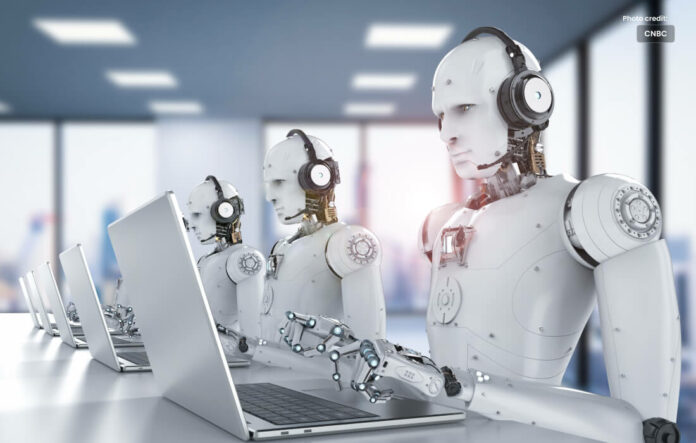Robots revolutionize efficiency, safety & innovation across sectors.
Science fiction has always featured robots, from the adorable R2-D2 in Star Wars to the terrifying Terminator. Fictional robots may pique our interest, but they also mask the significant influence that real-world robots are having on our daily lives.
Robots have revolutionized a number of industries in recent years, changing how we work, produce, and even receive healthcare.
The Revolution of Robotics
Silently but steadily gaining steam, the robotic revolution is transforming our interactions with the outside world. Though the origins of this revolution can be found in the early 20th century, the rapid advancement of robotics in the 21st century is something we have never seen before. According to today latest news the development of artificial intelligence, advances in manufacturing and materials, and the growing need for automation to meet the demands of a globalized world are some of the main forces behind this revolution.
Manufacturing Robots
Manufacturing is one of the most well-known and reputable applications of robotics. Robots are becoming indispensable to production lines and factories for accuracy and efficiency. They can complete repetitive tasks quickly and accurately, which lowers the possibility of human error. Robots likewise don’t need breaks or relaxation; they work nonstop, around the clock. This lowers labor costs significantly for manufacturers while simultaneously boosting productivity.
Automation and robotic arms have taken center stage in sectors like automotive manufacturing, where they are used to quickly and accurately assemble complex vehicles. Cobots, or collaborative robots, are made to complement humans and improve their abilities.
Robotics and Healthcare
Robotics is making significant strides in the healthcare industry. There are a ton of potential advantages, from robotic companions for the elderly to robot-assisted surgery. Today’s national news headlines claim that surgical robots, such as the da Vinci Surgical System, improve surgical precision and expedite patient recovery times, thereby enabling minimally invasive procedures. When it comes to getting into tight spaces, robots are more dexterous than a human surgeon’s hand.
Furthermore, elderly people and people with disabilities are receiving much-needed support and companionship from companion robots. These robots can improve the quality of life for individuals in need by performing duties like mobility assistance and medication reminders. An aging population is driving up demand for healthcare services, and robots are filling the void.
Both machine learning and artificial intelligence
The rapid advancement of machine learning (ML) and artificial intelligence (AI) is what is propelling the current robotic revolution. Robots can now learn and adapt thanks to these technologies, increasing their versatility and ability to perform a greater variety of tasks. Robots are now able to process data, identify patterns, and make decisions instantly thanks to machine learning algorithms.
For instance, AI and ML are used by self-driving cars to negotiate challenging traffic conditions. These technologies can be used by drones to survey and examine landscapes. Artificial Intelligence is being used by even domestic robots, such as personal assistants and vacuum cleaners, to increase their productivity and adaptability to user demands.
Difficulties and Ethical Issues
The development of robots has many advantages, but there are drawbacks as well as moral dilemmas. One major concern is the possibility of job displacement as a result of automation. Robots replacing manual labor-intensive tasks could result in job loss and necessitate a reassessment of the skill set of the labor force. Societies and industries must make the necessary investments in education and retraining programs in order to adjust to these changes.
The employment of robots in delicate fields like healthcare and military applications also presents ethical challenges. For instance, the use of autonomous weapons raises questions about potential abuse and the absence of human judgment in life-or-death choices.
The Prospects for Robotics
We can only anticipate that robotics technology will become even more ingrained in our daily lives as it develops. Robotics will not only be used in manufacturing and healthcare in the future. It’s likely that robotics will become more prevalent in fields like entertainment, disaster relief, space exploration, and education.
We can imagine educational robots that improve student learning by giving them individualized instruction. Robots can be sent to far-off planets and moons for data collection and experimentation in space exploration, doing away with the necessity for human presence in hazardous environments.
Conclusion
The emergence of robots is changing many industries as well as how we live and work. From manufacturing floors to operating rooms and beyond, their influence is evident. Robots have the enormous potential to enhance human well-being and improve the world, despite certain obstacles and ethical dilemmas.
The robotic revolution is happening right in front of our eyes; it is not some far-off future. Harnessing the full potential of robotics to shape our future will require embracing this transformation and resolving its obstacles. It is crucial to keep in mind that robots are real and here to stay as we navigate this fascinating era. They are not just the stuff of science fiction.




